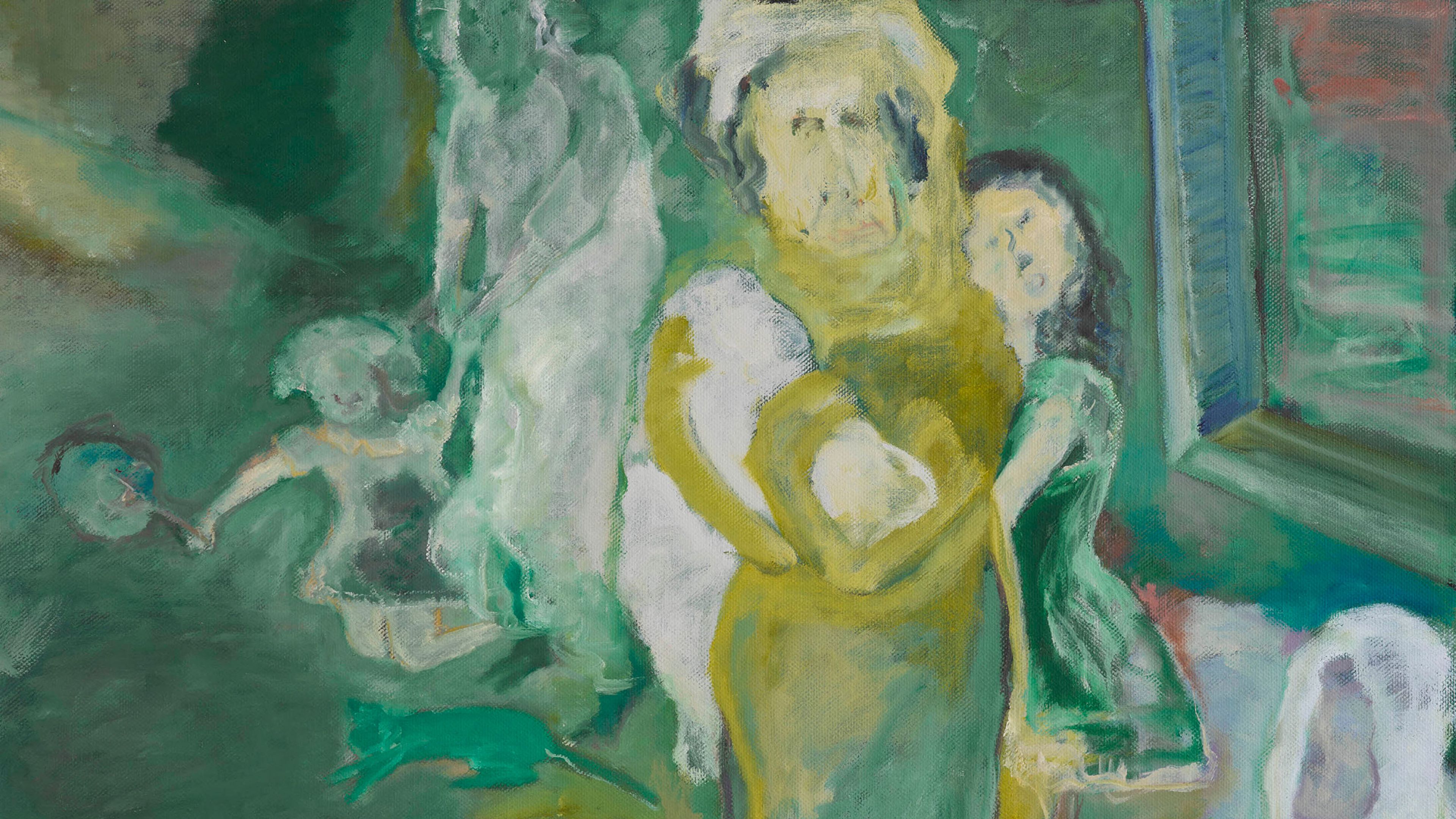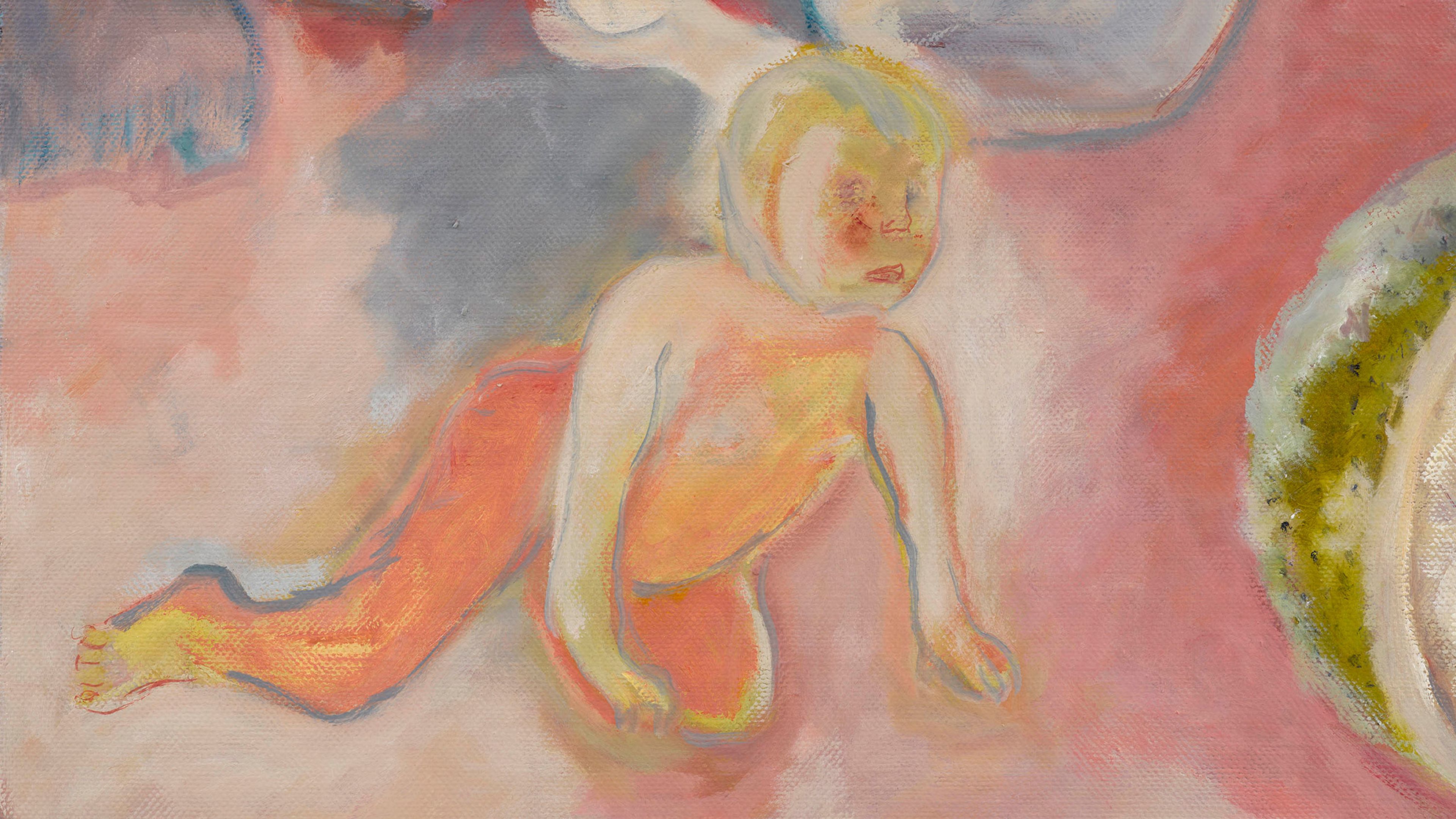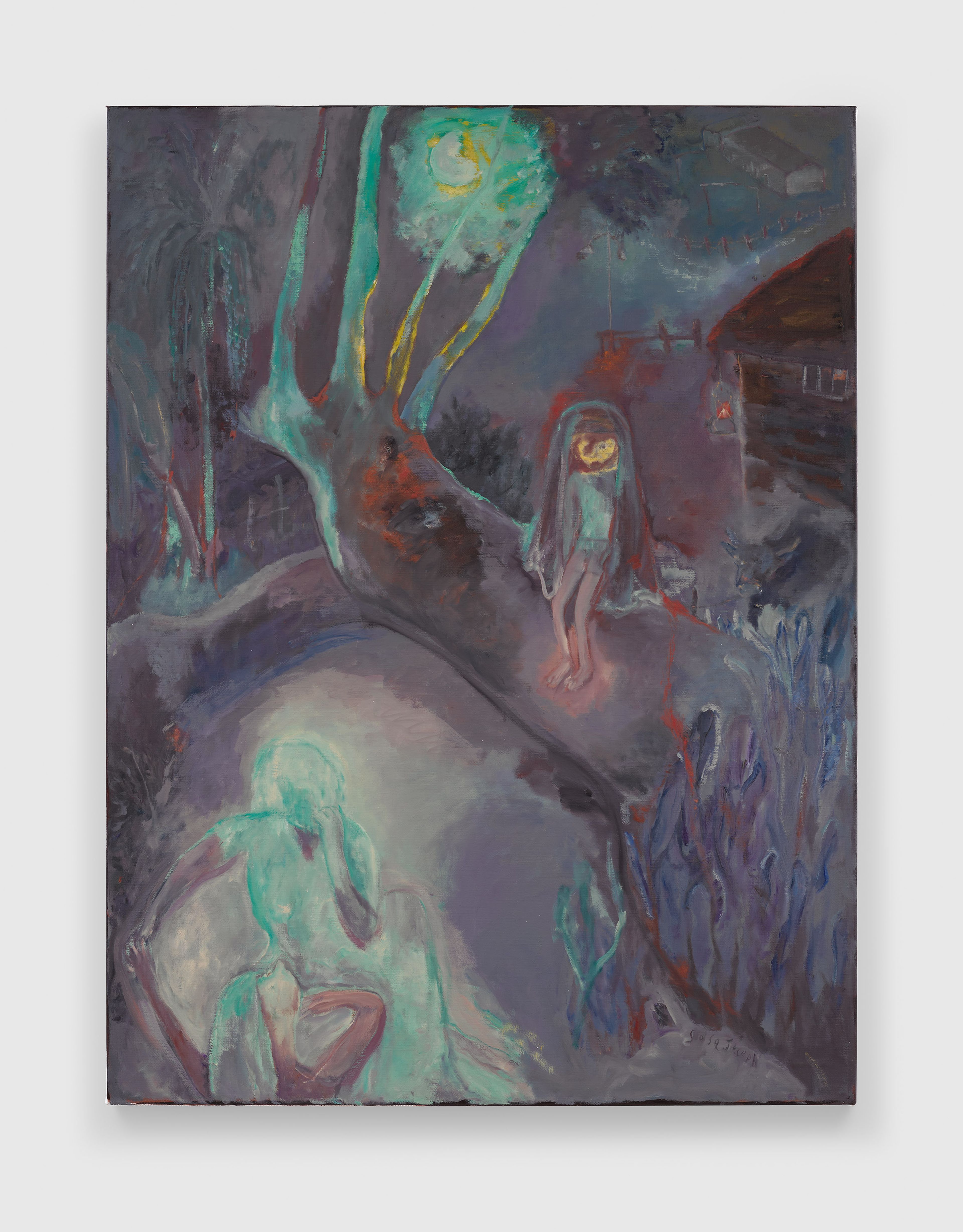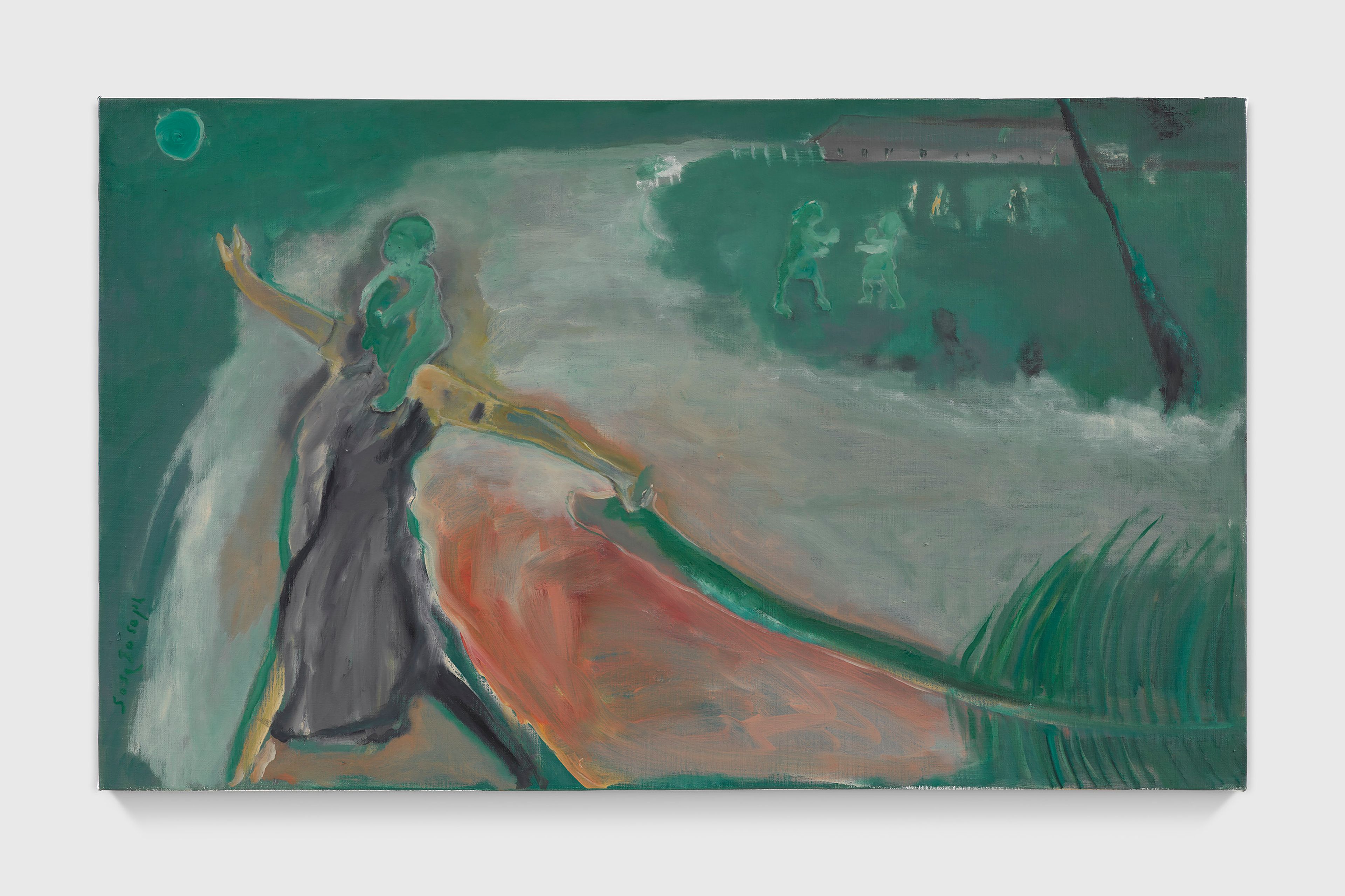Exhibition
Sosa Joseph: Pennungal: Lives of women and girls
Want to know more?
Past
August 30—September 28, 2024
Opening Reception
Friday, August 30, 6—8PM
Location
London
24 Grafton Street
London W1S 4EZ
Tue, Wed, Thu, Fri, Sat: 10 AM-6 PM
Artist
Sosa Joseph

Sosa Joseph, Girls learning to find eggs inside hens, 2023–2024 (detail)
Explore

Sosa Joseph, Snakeheads, catfish, and Aisha, 2024 (detail)
“What’s vital is challenging myself as a painter…. It’s an unconscious, spontaneous, and intuitive evolution, much like an entirely improvised performance…. In a manner of speaking, I am ‘dreaming up’ my canvases. I know my subject, which is women’s condition in general in patriarchal societies, the Muslim women of Mattancherry being just a microcosm.”
—Sosa Joseph in conversation with John Mathew, 2018–2024. All subsequent quotes by the artist are from the same source.

Installation view, Sosa Joseph, Pennungal: Lives of women and girls, David Zwirner, London, 2024
“The exact place where I am from is called Parumala. It’s a village in the Kuttanad region ... one of the few places in the world where farming is done below sea level. Naturally, Kuttanad has more wetlands and water bodies. There are four rivers around, including River Meenachil that Arundhati Roy has written about in God of Small Things. One more of these four rivers is River Pamba. So, that’s where I come from. A rather watery place. Full of paddies. More buffaloes than cows. More ducks than hens. A lot of sugarcane along the river. Most people are poor. Summers are sultry. Flooded during the monsoons.”

Installation view, Sosa Joseph, Pennungal: Lives of women and girls, David Zwirner, London, 2024
“I thought of all forms of water as the river.... In my understanding of the world, my juvenile cosmology, if you will, the River Pamba enveloped us; we sort of lived in a bubble inside its riverine universe.... Beyond the river, where my father took his boat, the world ended. To my mind, he was like a space traveler: a man who paddled up to the edge of the earth and looked at what lay beyond!”

Sosa Joseph, Girls learning to find eggs inside hens, 2023-2024 (detail)
“As people who live by the river know, the river is like a lover. It brings you something or the other daily. You might spot it floating at times. Sometimes it washes ashore, as if the river was bringing you a gift to the doorstep, just to leave it there for you without a word or a note, before flowing away silently.”

Installation view, Sosa Joseph, Pennungal: Lives of women and girls, David Zwirner, London, 2024
“I was twenty-four when I left the world I was born in. And there is not really much nostalgia, because I haven’t lost that world; I keep revisiting and experiencing it…. I think of it as an exploration of the genesis and evolution of my visual sensibility; my visual coming of age. All the images are recurring motifs ... anchor points in my visual journey.”
“I have memories of my father coming home with his paddle on his shoulder, walking through the sugarcane fields that stood by the river. My aunt lay dead in the same sugarcane field, after she was bitten by a viper there.... There is a lot that happened around the river. A writer would write a novel. I would paint.”

Sosa Joseph, Night of the viper, 2024 (detail)
“The choice of the palette is mostly unconscious; it depends on what you are painting, when, and where.... Colours are chosen instinctively by the mood or emotion I work towards. Colour can also be a frame of mind.”
“I am always moved by the drama in everyday life. Seemingly banal, mundane situations in life contain a lot of interesting material … the postures, how the anatomy is organised and how it keeps changing, the facial expressions that come and go, and so on.... The situations themselves are often absurd and tragicomic, poignant and laughable at the same time. At times, I think the theatre is in our homes.”

Installation view, Sosa Joseph, Pennungal: Lives of women and girls, David Zwirner, London, 2024
“When I was a child, my parents often didn’t have money to buy new clothes for all of us— we were four girls, and my brother—on occasions such as Christmas. My mother would perhaps buy something for my sisters, but for me, her youngest child, she’d sew something herself. For making a blouse for me, she’d then pinch some length of red cloth meant for the Communist Party flags!... My friends and even my brother would tease me; I was ecstatic, though, because nobody had a blouse so red!”
Inquire about works by Sosa Joseph























